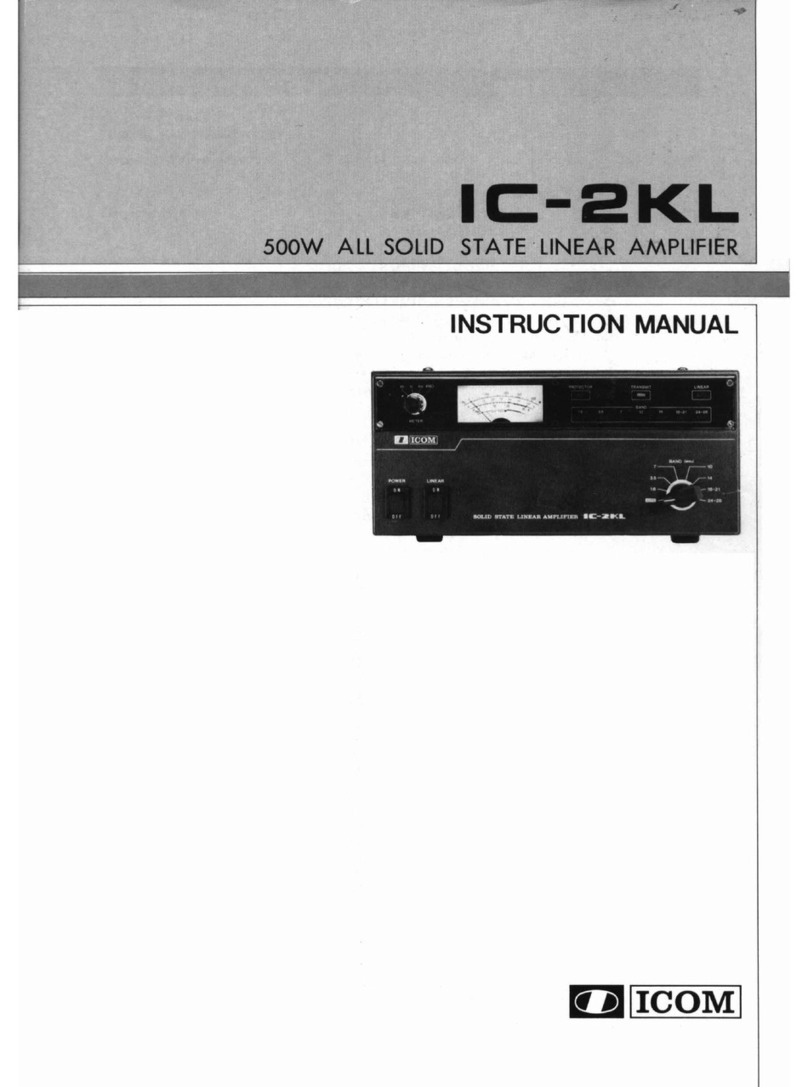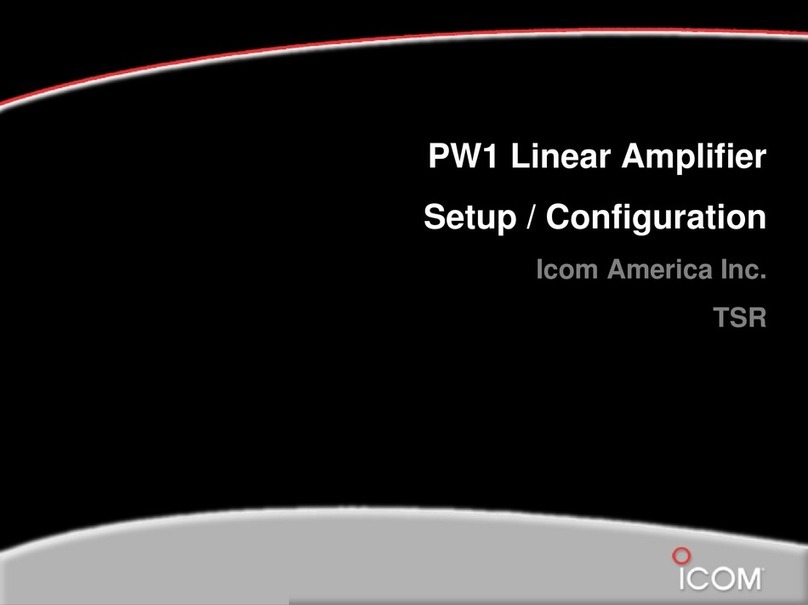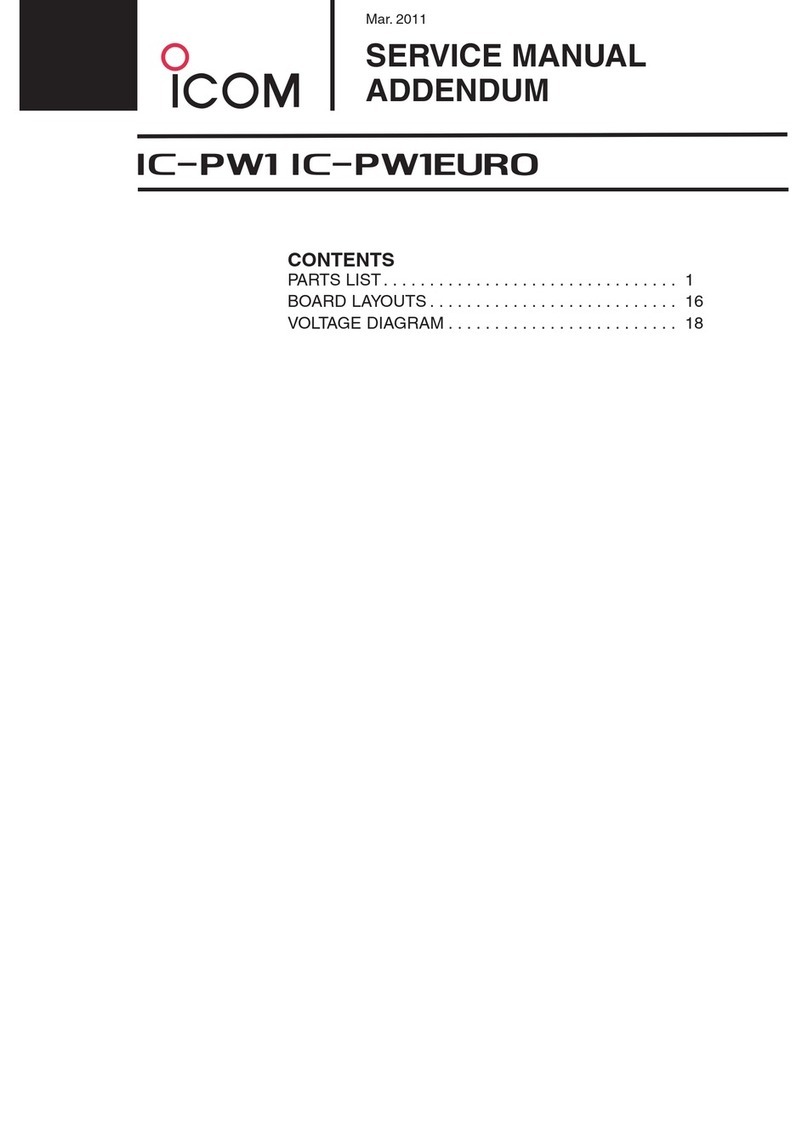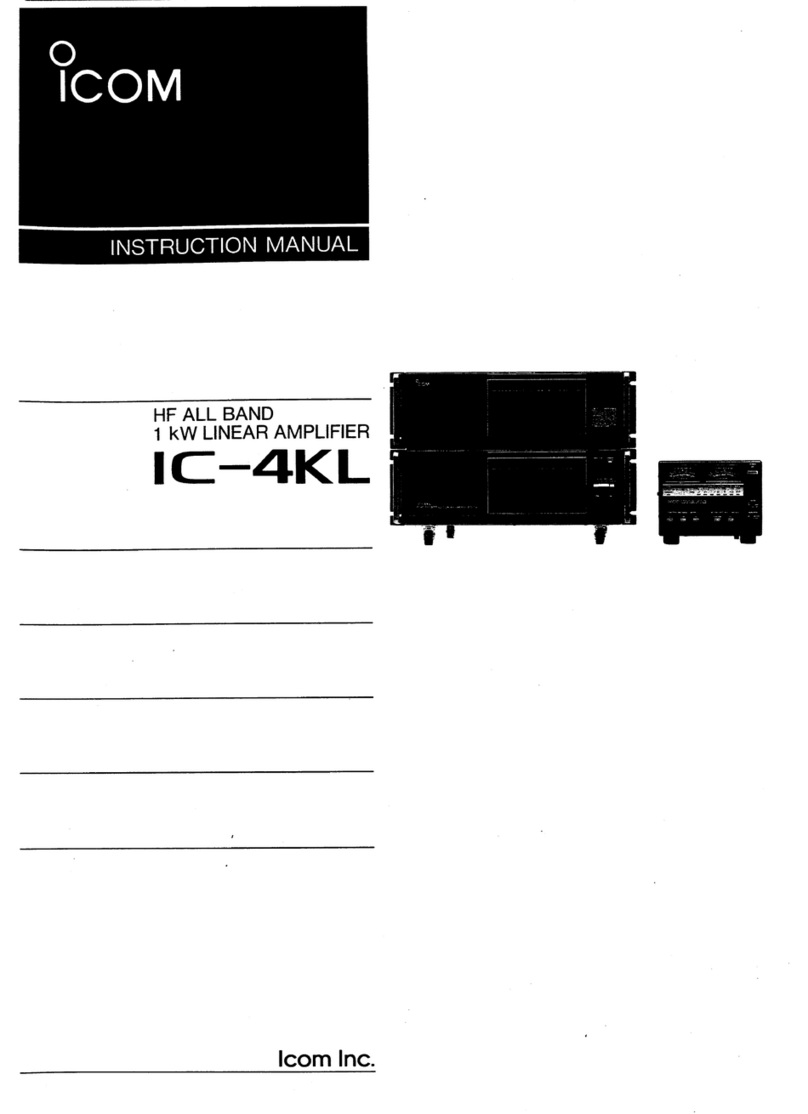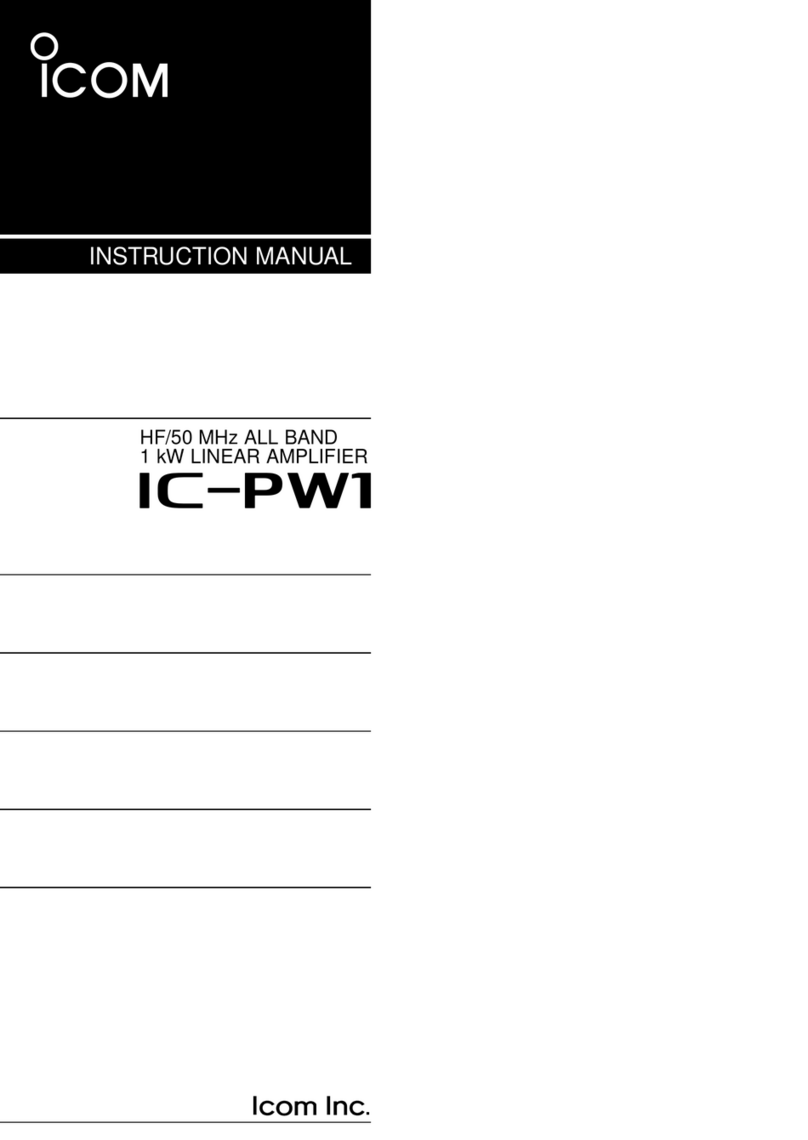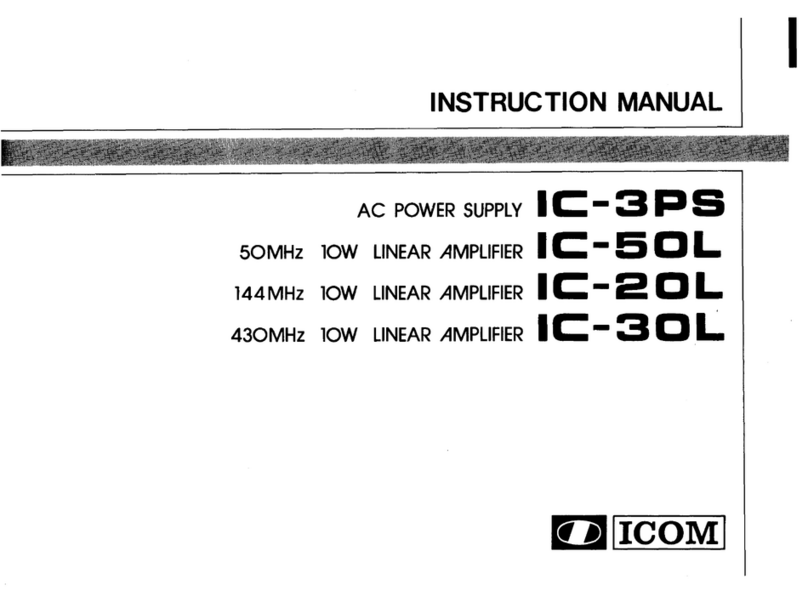
1
Notes on the IC-2KL 10/12m modification
The first thing you do in the ICOM modification is removing the Low Pass Filter unit from
the 2KL. I would recommend taking a picture of the manner in which the 12 or more cables
are plugged into that unit. I didn't think of that until just now, but I did mark each
cable so it would go back in the right spot.
The first three items to be removed from the LPF board are (you guessed it) L31, C57 and
C58. These items are only in the A (American) version. The E (European) version has 10
Meters installed. I have a feeling that their "cute" little stunt of removing the 10
Meter band when the FCC passed that silly rule is a little on the weak side.
The next two items to come out are "jumpers". One is underneath the board and if you
study their print very closely, you will find it. The second jumper is actually a solder
bridge at one side of L1. The board is screened L1 and in the A unit, L31 is mounted
there.
I don't recommend this modification to everyone. The board is flow soldered, and all the
holes that are going to be used (about 50 them) for new components are soldered over. It
would have been a messy job with solder wick or a manual de-soldering tool. Fortunately,
I have a $600 automatic solder sucker and that let me suck out all the holes in less than
minute. By hand, it would have taken 30 minutes. As it was, I spent about 4.5 hours doing
the modification.
All the parts, except jumper wires and wire insulation, are included in the kit. I
installed the little stuff first and left the coils and relays to last. If I had
installed the items as they were listed, it would have added an hour to the mod time.
For some reason, they had a cap installed in the unit, that was used only for a jumper.
One lead was in a hole of a land that went to nothing, and the other lead tied its land
to another circuit. So when you take that jumper out, take that lonesome cap with it.
What it amounts to is that jumpers A and B are removed, and jumpers C, D, E and F are
installed. Jumpers C and F are under the board and it is not readily apparent where they
are really suppose to be installed. But looking at the bottom of the board, they are just
continuations of buss bars extending across the board.
The parts lists indicates two wires (N and G) are to be installed. The wire is not
furnished.
Wire N goes from the upper right "N" hole to the lower right "N" hole.
Wire "G" goes from L16 (which is a choke that was installed in the mod sequence) to a "G"
hole in the upper right corner of the board, right next to where the N wire went to a "N"
hole. The L16 choke is outside of the shielded compartment, and the "G" hole will be
found just to the right of L16, inside the shielded compartment.
The last part of the mod is to cut a trace on the LED Display board. This should be done
before the LPF unit is reinstalled in the 2KL. The real intent is to disconnect a diode
(D8) that is mounted on the other side of the board. I will never understand why they
didn't put the D8 diode (which is only used in the A version) on the accessible side of
the board. There is no# law against components on both sides of a board. I do it all the
time, particularly when components are too close to each other.
Anyway, that trace has to be cut, and an X-acto knife is as good a way as any.
This completes the mod. The front panel switch is not changed out, so l0-Meters can only
be selected by remote control from the Xcvr, and there is no LED on the front panel to
indicate that the 2KL automatically switched to 10 Meters.
